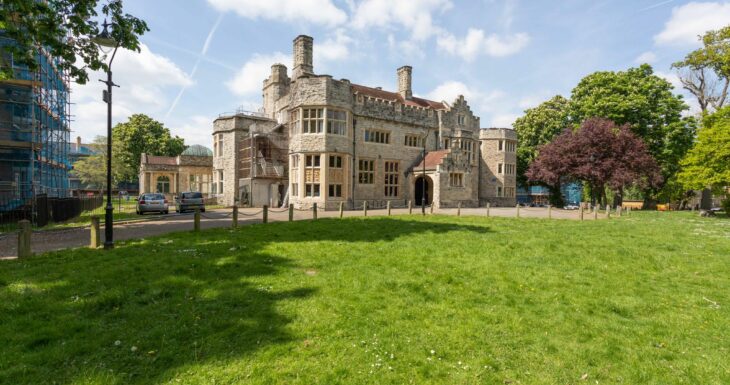Kingswood House
Kingswood House, Seeley Drive, Dulwich, SE21 8QN

Early History
King’s Wood, originally part of Dulwich Manor, was harvested for wood and first documented in 1576 as King’s Coppice, likely dating back to medieval times. The freehold belonged to the College of God’s Gift (Dulwich College), founded in 1619 by Edward Alleyn. Alleyn had owned Dulwich Manor since 1605 and endowed the land to the college.
1811: William Vizard
Lawyer William Vizard leased the land in 1811 and built Kingswood Lodge, completed in 1814. Vizard, involved in politics, served as solicitor to Caroline, Princess of Wales, and successfully defended her in 1820 against King George IV’s attempts to dissolve their marriage. The original rectangular house included what are now the Jacobean Room and part of the Golden Room in Kingswood House.
1831-1890: Multiple Owners
Vizard sold the lease to merchant James Hannen in 1831, who passed it to W. Cooper in 1844. Swiss merchant Johann Conrad im Thurn acquired it in 1854, and his family made significant additions, including facilitating the construction of Sydenham Hill railway station. J. Everitt took over in 1868, selling it to carpet manufacturer Thomas Tapling in 1869, who added a billiard room.
1891: The “Bovril Castle” Era
In 1891, James Lawson Johnston, the inventor of Bovril, acquired the house. He commissioned architect Henry Vaughan Lanchester to add the entrance hall, Great Hall, Palm Court, and a faux “Castle Ruin.” The extensive renovations earned it the nickname “Bovril Castle.” Johnston died in 1900, and in 1908 his executors leased it to Prince Serge Constantivich de Bolotoff, an early aviation pioneer.
1916: Massey-Harris Convalescent Home
William Dederich, a railway contractor, evicted the de Bolotoffs in 1912. In 1916, he sublet the house to Massey Harris for a convalescent home for Canadian troops during WWI. The home opened in April 1916 with 105 beds and hosted a visit from George V and Queen Mary in 1917.
1919: Vestey Ownership
Shipping magnate Sir William Vestey purchased the house in 1919, making significant interior changes. Vestey, who was made Baron Vestey of Kingswood in 1922, was well-regarded by the community for his and Lady Vestey’s generosity.
WWII and Beyond
During WWII, Kingswood House was adapted for wartime use, including installing a reinforced concrete ceiling in the basement for an air raid shelter. The house suffered damage from a parachute mine and nearby V1 flying bombs. In 1946, the London County Council issued a compulsory purchase order to develop the estate for housing. The new estate for 789 families was built around Kingswood House, preserving it for potential community use and integrating it into the organic layout of the development.
